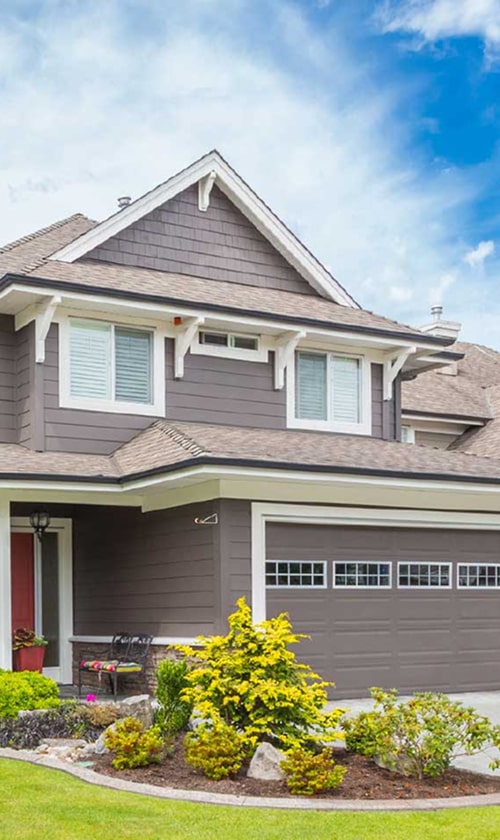How Heat Pumps Work

Heat pumps are efficient devices that move heat from one place to another using just a little electricity. We use them for both heating and cooling our homes.
Heat Transfer Principles
Heat pumps work by moving heat rather than creating it. In the winter, they pull heat from outside air or ground and move it indoors. In the summer, they push heat from inside our house out to keep us cool.
This process uses the science of heat transfer. Heat naturally flows from warmer to cooler places, but a heat pump uses energy to reverse this flow when needed. The result is an effective way to change the temperature in our home without burning fuel.
Heat transfer in a heat pump makes it much more efficient than traditional heating and cooling systems. Most systems can deliver up to three times more energy as heat than they use in electricity.
Key Components: Compressor, Refrigerant, Expansion Valve, and Reversing Valve
A heat pump uses several important parts to move heat:
- Compressor: Increases the pressure and temperature of the refrigerant.
- Refrigerant: A special fluid that absorbs and releases heat as it changes from a liquid to a gas and back.
- Expansion Valve: Drops the pressure of the refrigerant so it can absorb heat again.
- Reversing Valve: Switches the direction of the refrigerant so we can heat or cool as needed.
Each component works together to carry energy through the system. The refrigerant flows in a closed loop, carrying heat in or out. The compressor and expansion valve control the state and pressure, while the reversing valve lets us change between modes.
Without these key parts, our heat pumps wouldn’t be able to transfer heat efficiently or switch between heating and cooling.
Dual Functionality for Heating and Cooling
Heat pumps are different from most HVAC systems because they can handle both heating and cooling. We only need one system to keep our space comfortable during every season.
In heating mode, the pump moves heat inside. In cooling mode, it moves heat outside, just like an air conditioner. The reversing valve is what lets us change from heating to cooling with the push of a button.
This dual functionality means fewer systems to install and maintain. It also helps us save money on utilities by using a single energy-efficient solution for all our heating and cooling needs.
| Setting | Heat Pump Action |
|---|---|
| Heating | Moves outside heat indoors |
| Cooling | Pushes indoor heat outdoors |
Types of Heat Pumps
Heat pumps come in different types, each designed for unique environments and needs. The main differences are how they collect and move heat, their installation process, and their impact on monthly energy bills.
Air Source Heat Pumps
Air source heat pumps are the most common type used in homes today. They work by moving heat between the inside of our house and the outdoor air. These systems are often easier to install than other types because they do not require underground pipes or wells.
One important benefit is energy efficiency an air source heat pump can deliver up to three times more heat energy than the electricity it uses. These systems also provide cooling in the summer, working much like a standard air conditioner. This makes them a flexible HVAC system for both hot and cold weather.
Air source heat pumps work best in areas with mild climates. In very cold places, efficiency drops, but newer models can handle lower temperatures. Here’s a quick list of pros and cons:
| Pros | Cons |
|---|---|
| Lower installation cost | Less efficient in very cold climates |
| Easy to retrofit | May need backup heat source |
| Can heat and cool | Outdoor unit can be noisy |
Ground Source Heat Pumps
Ground source heat pumps are also called geothermal heat pumps. These systems use underground pipes filled with fluid to move heat between our home and the ground. The main advantage is that the ground stays at a steady temperature all year, which helps the system work well in almost any climate.
Ground source systems are usually more expensive to install than air source heat pumps because they require digging and laying pipes, either in vertical wells or horizontal trenches. However, they often save more money over time due to high efficiency and lower operating costs.
These systems can heat, cool, and sometimes provide hot water. Many public buildings and new homes use geothermal heat pumps for energy savings and comfort. Maintenance is low because the underground parts last a long time.
Water Source Heat Pumps
Water source heat pumps use a body of water—like a lake, pond, or well—as the heat exchange source. These systems pump water through pipes to collect or release heat, then use that heat to warm or cool the air indoors.
One key benefit is high efficiency, because water temperatures tend to change less than air. But we need a large and stable water source close to our property to use this type of heat pump. Installation often involves permits and checks to make sure the water is suitable.
Water source systems are less common in homes than air or ground source heat pumps, but they are used in some communities and larger buildings. Some homeowners in rural areas choose them because of the high efficiency and reliable heating and cooling. Proper installation and regular inspection help keep the system working safely.
Benefits of Heat Pump Installation
Installing a heat pump in our homes can help us save on energy bills, use less electricity, and help the environment. We also get better control over indoor comfort and air quality through efficient, quiet technology.
Energy Efficiency and Long-Term Savings
Heat pumps use electricity to move heat instead of creating it from fuel. This makes them highly energy-efficient, using far less energy than traditional heaters or air conditioners. Our utility bills go down because of the lower running costs.
We can also take advantage of programmable thermostats to better manage energy use. Over time, this brings significant long-term savings and lowers what we spend on heating and cooling our homes.
Heat pumps are also known for their durability and can last many years with proper maintenance, reducing replacement costs. With fewer parts to service, our maintenance costs are often lower, adding to the cost-effectiveness.
| Benefit | Heat Pump | Traditional Heating |
|---|---|---|
| Energy Efficiency | High | Moderate/Low |
| Long-Term Savings | Significant | Limited |
| Maintenance Needs | Low | Often Higher |
Year-Round Comfort and Versatility
One of the biggest advantages of heat pumps is their versatility. We can enjoy year-round comfort, as heat pumps heat our homes in winter and cool them in summer.
They provide consistent warmth in cold months and reliable cooling when it’s hot, giving us efficient home comfort regardless of the season. Most modern heat pumps operate quietly, so they don’t disturb our daily lives.
With programmable settings, we can easily control indoor temperature for further comfort and energy savings. This precise control helps maintain consistent comfort and can be more effective than traditional systems that only heat or only cool.
Examples of Versatility
- Heating: Works even in cold outdoor conditions
- Cooling: Doubles as an air conditioner
- Dehumidification: Removes extra moisture for better indoor comfort
Environmental Benefits and Carbon Footprint Reduction
Heat pumps are more environmentally friendly than many other heating systems. They create less carbon emissions since they don’t burn fossil fuels directly. This helps lower our carbon footprint and the overall environmental impact of our home.
Switching to a heat pump can support sustainable heating, especially if we use renewable electricity. This means we help in lowering greenhouse gas emissions linked to climate change.
Compared to oil or gas systems, heat pumps are a much more eco-friendly way to heat and cool our living space. Fewer emissions also make a positive impact in the community.
Key Environmental Benefits:
- Reduced carbon emissions
- Sustainable and energy-efficient operation
- Lower environmental impact compared to traditional systems
Improved Indoor Air Quality
Heat pumps help improve indoor air quality by constantly circulating and filtering air in our home. Most units come with built-in filters that trap dust, pollen, and other allergens.
Because heat pumps also control humidity, they offer dehumidification which can prevent mold and mildew growth. Maintaining the right humidity leads to better indoor comfort and can benefit family members with allergies or asthma.
Unlike older systems that may bring smoke or fumes, heat pumps provide cleaner air by avoiding combustion altogether. The result is a healthier, fresher home environment for all of us.
Professional Heat Pump Installation Process
A well-done heat pump installation starts with a detailed check of our home’s heating and cooling needs. Choosing professionals with the right certifications helps make sure our new system works safely and runs efficiently.
Initial Assessment and Sizing
First, HVAC professionals need to visit our home for an assessment. They look at factors like the size of our home, the number of windows, and how much insulation we already have. They also check for air leaks and measure how much heating and cooling our space really needs.
Choosing the right size heat pump is very important. If the heat pump is too small, it will struggle to keep us comfortable. If it is too big, the system may turn on and off too often, which uses more energy and can cause wear and tear.
Proper sizing helps our heat pump run smoothly, last longer, and save us money on our energy bills.
Proper Installation Steps
Professional heat pump installation follows several key steps. First, we need to carefully place the indoor and outdoor units. HVAC professionals place the outdoor unit on a solid, level pad and make sure it has good airflow. They install the indoor unit where air can move freely through our living space.
Next, workers connect the refrigerant lines, wiring, and drainage. They check every connection for leaks and test the electrical parts to make sure everything is safe. Professionals then charge the system with the correct amount of refrigerant.
Finally, they test the unit to make sure it heats and cools as needed. Certified installers follow important manufacturer guidelines during each step of the process.
Importance of Insulation and Home Size
Good insulation helps our new heat pump system work at its best. Without enough insulation, even a high-quality installation can struggle to keep our rooms warm or cool. Professionals often check attic insulation, wall insulation, and window quality during their assessment.
The size of our home affects how powerful the heat pump system needs to be. For larger homes, we may need a bigger unit or several units to spread heating and cooling evenly. Small homes need smaller systems for the best efficiency.
By checking our insulation and home size, HVAC professionals help us get the most out of our investment and enjoy better comfort year-round.
Costs, Incentives, and Maintenance Considerations
When we look at heat pump installation, it’s important to know the costs, available savings, and upkeep. The total expense doesn’t just come from buying the system, but also from maintenance, possible rebates, and how we choose to install it.
Upfront Installation Costs and Running Expenses
Upfront installation costs for heat pumps can range from $4,000 to $10,000 or more, depending on the type and size of the system. Air-source heat pumps are generally less expensive than ground-source models, which can cost up to $20,000 with excavation.
We also need to consider running expenses. Heat pumps use electricity but are much more efficient than furnaces or air conditioners. Monthly utility bills decrease, especially in homes switching from oil or electric resistance heat. These energy savings can add up over time, often reducing bills by 30% to 60% depending on climate and usage.
Payback periods are influenced by both the initial investment and long-term utility savings. In many cases, the extra upfront cost may be recovered in 7 to 12 years through lower energy costs.
Available Incentives, Rebates, and Tax Credits
Both governments and utilities offer programs to lower installation costs. Federal tax credits, like the Energy Efficient Home Improvement Credit (up to 30% of the installed cost, capped at certain amounts), make new systems more affordable.
Many states and local utilities provide rebates ranging from a few hundred to a few thousand dollars depending on the equipment and where we live. We should always check for current offers because programs change over time.
Incentives help encourage using renewable energy, reduce upfront costs, and speed up payback. It’s important to gather all paperwork and follow each program’s specific rules to get the full benefits.
Long-Term Maintenance and Durability
Heat pumps are known for a long lifespan often 15 to 20 years with regular maintenance. Common maintenance tasks include changing filters, checking refrigerant levels, and cleaning the coils. These steps keep the system efficient and help prevent costly repairs.
Maintenance costs are usually low, especially when compared to older systems like oil furnaces or central air conditioners. Annual tune-ups can cost $100 to $300, depending on the company and system type. Because heat pumps have fewer moving parts, breakdowns are less frequent.
Durability is a strong point. Quality equipment installed by professionals tends to last longer and work better over time.
DIY vs. Professional Installation
While some may consider a DIY installation to save money, most homeowners should use professional installers. Heat pumps require electrical work, refrigerant handling, and careful system sizing. Mistakes can reduce efficiency, cause safety hazards, and void warranties.
Professional installation ensures the system meets code and runs at peak efficiency. Many manufacturers require proof of professional installation to get warranty coverage. While this adds to overall installation costs, it often prevents bigger problems down the road.
| Method | Upfront Cost | Risks | Warranty | Expertise Needed |
|---|---|---|---|---|
| DIY | Low | High (errors, code) | Usually No | Advanced technical |
| Professional | Moderate-High | Low (correct install) | Yes | None |




